Services
-
Documentation and Study of Materials
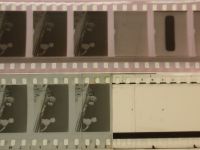
The restoration process begins with the study and inspection of the available materials and concludes with the documentation of the work undertaken. The analysis of the available elements including non-filmic but related sources, can help to determine the most appropriate restoration approach and timetable, also to immediately identify any urgency for the restoration. At the conclusion of the restoration process, all stages of the workflow, problems encountered and solutions adopted will be accurately documented.
-
Film Repair
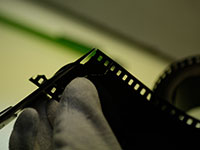
The manual repair of the celluloid film is the first phase involved in the restoration process. It aims to restore the original film’s mechanical capability, enabling a smooth passage through the machines in the successive phases of the restoration process (printers, scanners, telecine, sound digitalization etc). The reparation work is carried out by hand principally on a manual rewinding table, using instruments including scissors, scalpels, tweezers, swabs, solvents, brushes and specialised film adhesive tape, and glue (specifically produced by L’Immagine Ritrovata for splicing together nitrate film and acetate film stock). During the repair phase all splices are checked and redone if necessary. The repair of physical damage, such as breakages, strains or tearing, whether it is at the perforations or on the actual images. Furthermore, any areas of dirt are manually cleaned. The guiding principles of the repair phase will be the optimum balance between the mechanic functionality and the aesthetic of the image.
-
Film Washing
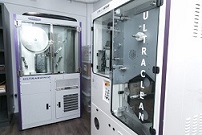
The film is subjected to complete ultrasound cleaning, passing through a wash tank, and by means of a system of rotating sponges, undergoes the ultrasonic process. Finally, it is dried by a strong, precise jet stream of air.
-
Film Scanning
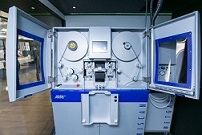
L'Immagine Ritrovata state of the art film scanner can scan cellulose nitrate, diacetate and triacetate films in extremely poor preservation state. Films that are physically badly damaged can be scanned and worked on digital following the common digital restoration workflow. Also films with serious vinegar syndrome issues can be digitized.
It works without any PIN register, and it allows adjusting tension while film is running with two options: "normal" and "soft". In sprocketless mode the scanner is absolutely complete: besides scanning, step size can be set. This system tells the machine the size of the frame to be scanned and this setting will be kept unchanged all along the reel. Three and two-perforation films can be scanned as well. Another key possible adjustment in sprocketless mode is making the loop without unloading and reloading the film, something which happens normally when films are particularly shrunk, so there are no risks of damaging the film, missing frames or losing the loop. All this can be avoided without rerunning the scan, so that the work can be done considerably faster and safer.
A number of restorations that before necessarily followed the traditional photo-chemical chain can be carried out today directly by scanning the original film and skipping the analogical duplication, for unequalled better results. Arriscan is extremely accurate in handling materials that can be very fragile and it covers the whole latitude even of printfilm - if it comes worse to worse you can even scan single frames.
In addition to this, both color and black-and-white film stocks can be scanned using the scanner's unique wetgate option, which washes away dust and conceals scratches during the scanning process. The wetgate option dramatically reduces digital cleaning times and, on archive materials in particular, it is the feature that makes the whole difference.
-
Sound Scanning
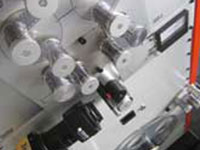
L'Immagine Ritrovata is bringing to Hong Kong its exclusive approach to sound restoration and preservation, with its ability to adapt to the challenges coming from an ever-changing technological landscape.
The sound transfer room will be equipped with the state of the art soundtrack scanner by Sondor, Resonances. Key features: the possibility to clean-up the tracks while transferring, and to eliminate image-spread distortion from soundtrack negatives. The system reads all types of 16mm and 35mm optical tracks, and the quality of the transfer is granted by PMC loudspeakers, some of the best loudspeakers on the market, and an acoustic controlled listening environment. Last but not least, the foundation of a good transfer is guaranteed by the know-how that comes from the years-long experience of L'Immagine Ritrovata.




